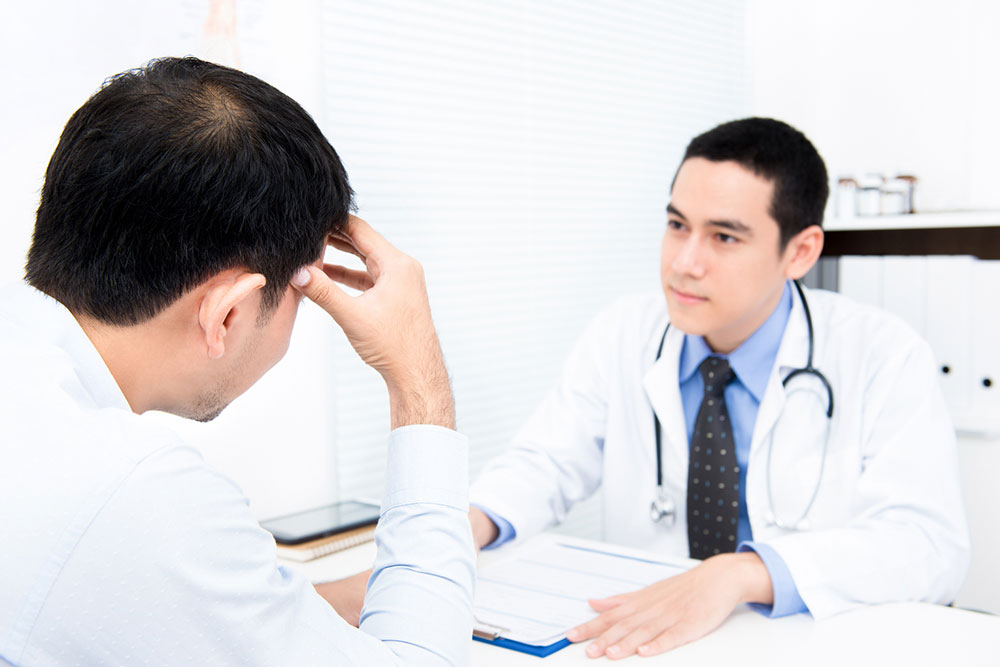
Bipolar disorder – Its types and early signs
Bipolar disorder is a mental health disorder characterized by extreme moods, either significantly high or low. The high periods are referred to as mania or hypomania, and the low moods are called depression. However, the moods can sometimes be concurrent, meaning individuals with bipolar disorder may have manic and depressive symptoms at once. The condition is usually difficult to diagnose; however, some signs can detect bipolar disorder early, and treatment can be started accordingly.
Types and symptoms
Often, the signs and symptoms of bipolar disorder overlap with those of other conditions, so it becomes difficult to diagnose it timely, which can delay treatment. However, there are now some criteria laid out by the Diagnostic and Statistical Manual of Mental Disorders that help recognize bipolar disorder.
There are four types of bipolar disorders, and the symptoms vary according to the type of the condition. These are as follows:
1. Bipolar I
This type is diagnosed when the individual experiences manic episodes. The symptoms are as follows:
- This includes a significant shift in the behavior and mood of the person. These mood changes are often unlike the person’s personality or usual behavior, making it evident that something is wrong.
- A manic episode is also considered manic when it is present most of the day and nearly daily. So, it is not a once-in-a-while episode, but it happens almost daily and often.
- These episodes last a week or are so severe that hospital intervention is needed, and then they are recognized as manic episodes.
Those dealing with bipolar I disorder also experience depressive episodes. However, according to the criteria, bipolar I is only diagnosed when the abovementioned symptoms are experienced. Other symptoms may overlap and hinder treatment and management therapies.
2. Bipolar II
This type of bipolar also has high and low moods; however, depressive episodes are more frequent and likely to be crucial in diagnosing bipolar II. The manic symptoms are less severe, and these mild signs are called hypomania. The symptoms and criteria for a bipolar II diagnosis involve the following:
- Individuals should experience at least one major depressive episode and one episode of hypomania.
- Specialists need to rule out any other conditions that could overlap with these symptoms.
3. Cyclothymic disorder
This is another type of bipolar disorder, which is diagnosed when the changes in mood and behaviors are similar to those in bipolar I and II. Still, the changes are less erratic and dramatic. Those with this type of bipolar usually have the symptoms for a minimum of two years at least, and in children, these symptoms are present for a year.
4. Unspecified bipolar disorder
This is a type of bipolar disorder that has symptoms of the condition. Still, they are not precisely similar to any of the other three types, so they cannot be categorized or diagnosed as any of the above types. These symptoms may adversely affect a person’s social, professional, or personal life and stress them out. If a patient has nonspecific bipolar disorder, it usually means that their symptoms are either too mild or don’t last long enough to qualify as a specific kind of bipolar disorder.
Signs of mania
While the criteria of symptoms are discussed to help categorize the type of bipolar an individual can be diagnosed with, here are the symptoms that specify a manic episode in individuals.
- Feeling overtly happy or high for long periods
- Feeling “wired” or jumpy often
- Not getting enough sleep because the body feels a reduced need for it
- Talking extremely fast and often with changes in topic and also racing thoughts
- Not having a big appetite and not feeling hungry enough
- Experiencing distractions often and easily
- Feelings of being able to do anything and everything
- Engaging in risky behavior, ranging from impulsive actions like gambling or going on a spending spree
- Feeling of extreme restlessness and impulsive thoughts and actions
- Feeling of grandiosity
Signs of depression
Apart from the mania symptoms, the lows are so low that they are depressive episodes, and here are some signs of depression to look out for:
- Feeling sad or hopeless for long periods
- Experiencing severe fatigue or a lack of energy
- Having a disturbed sleep cycle, for example, either sleeping too much or not enough
- Forgetting things and having trouble concentrating
- Feeling burdened to do the smallest tasks
- Talking and conversing very slowly
- Thinking about suicide or death often, or attempting suicide
- Having extreme and drastic changes in appetite
- Withdrawing from family and friends and not taking part in any social activities
- Losing interest in activities once enjoyed
Experts say these extremely high and low moods can sometimes lead to hallucinations and delusions. These types of symptoms are known as psychosis. When people feel grandiose, they suddenly feel like they may have special powers that are extremely important. Those experiencing extremely low episodes may feel like they are financially ruined and have committed some crime. They may also sometimes hear, smell, or see things that may not be there.
Symptoms in children
Some signs should be noticed in children, and these include the following:
- Having a short temper
- Focusing on an activity becomes difficult
- Having racing thoughts
- Complaining about aches and pains
Guardians need to be aware of these symptoms to carefully understand how to proceed with doctor appointments and diagnoses. Some management tips may help with regulating symptoms in adults and children. This involves a holistic approach, which involves joining support groups, taking treatments as suggested by a psychiatrist, and attending therapy sessions, which can help deal with negative thought patterns and manic episodes.
** If one or anyone one knows is going through suicidal thoughts, dial 888 to reach the Suicide and Crisis Lifeline. Text “HOME” to the Crisis Textline at 741-741.





